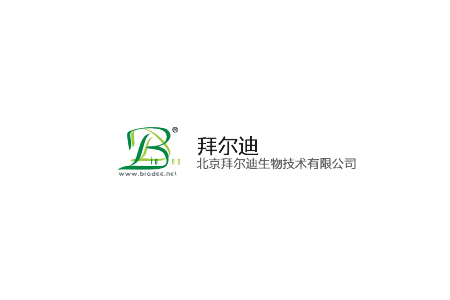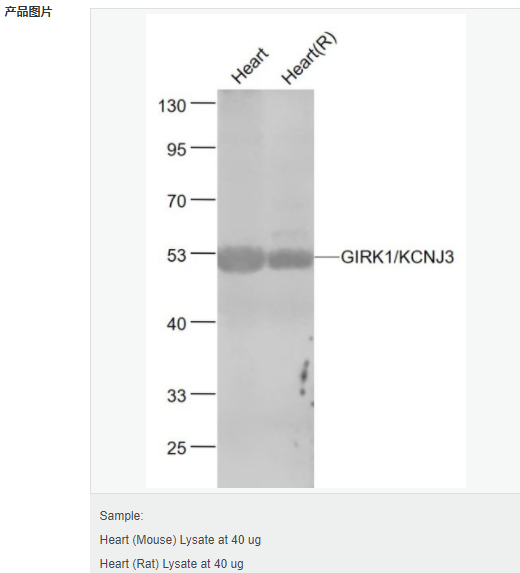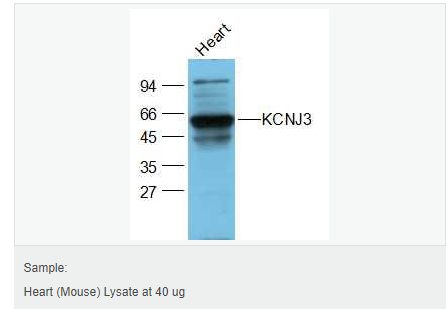

貨號
產品規格
售價
備注
BN41224R-100ul
100ul
¥2360.00
交叉反應:Mouse,Rat(predicted:Human,Dog,Pig,Cow,Rabbit,GuineaPig) 推薦應用:WB,ELISA
BN41224R-200ul
200ul
¥3490.00
交叉反應:Mouse,Rat(predicted:Human,Dog,Pig,Cow,Rabbit,GuineaPig) 推薦應用:WB,ELISA
產品描述
| 英文名稱 | GIRK1/KCNJ3 |
| 中文名稱 | G蛋白激活內向鉀通道1抗體 |
| 別 名 | inwardly rectifying subfamily J member 3; G protein activated inward rectifier potassium channel 1; G protein-activated inward rectifier potassium channel 1; GIRK-1; Inward rectifier K(+) channel Kir3.1; Inwardly rectifying potassium channel KIR3.1; IRK3; IRK3_HUMAN; Kcnf3; Kcnj3; KGA; KGB1; Kir3.1; Potassium channel; Potassium channel, inwardly rectifying subfamily J member 3; Potassium inwardly-rectifying channel, subfamily J, member 3. |
| 研究領域 | 細胞生物 神經生物學 通道蛋白 細胞膜受體 |
| 抗體來源 | Rabbit |
| 克隆類型 | Polyclonal |
| 交叉反應 | Mouse, Rat, (predicted: Human, Dog, Pig, Cow, Rabbit, Guinea Pig, ) |
| 產品應用 | WB=1:500-2000 ELISA=1:5000-10000 not yet tested in other applications. optimal dilutions/concentrations should be determined by the end user. |
| 分 子 量 | 55kDa |
| 細胞定位 | 細胞膜 |
| 性 狀 | Liquid |
| 濃 度 | 1mg/ml |
| 免 疫 原 | KLH conjugated synthetic peptide derived from human GIRK1:81-180/501 <Extracellular> |
| 亞 型 | IgG |
| 純化方法 | affinity purified by Protein A |
| 儲 存 液 | 0.01M TBS(pH7.4) with 1% BSA, 0.03% Proclin300 and 50% Glycerol. |
| 保存條件 | Shipped at 4℃. Store at -20 °C for one year. Avoid repeated freeze/thaw cycles. |
| PubMed | PubMed |
| 產品介紹 | This potassium channel is controlled by G proteins. Inward rectifier potassium channels are characterized by a greater tendency to allow potassium to flow into the cell rather than out of it. Their voltage dependence is regulated by the concentration of extracellular potassium; as external potassium is raised, the voltage range of the channel opening shifts to more positive voltages. The inward rectification is mainly due to the blockage of outward current by internal magnesium. This receptor plays a crucial role in regulating the heartbeat. Function: This potassium channel is controlled by G proteins. Inward rectifier potassium channels are characterized by a greater tendency to allow potassium to flow into the cell rather than out of it. Their voltage dependence is regulated by the concentration of extracellular potassium; as external potassium is raised, the voltage range of the channel opening shifts to more positive voltages. The inward rectification is mainly due to the blockage of outward current by internal magnesium. This receptor plays a crucial role in regulating the heartbeat. Subunit: Associates with GIRK2, GIRK3 or GIRK4 to form a G-protein activated heteromultimer pore-forming unit. The resulting inward current is much larger. Subcellular Location: Membrane; Multi-pass membrane protein. Similarity: Belongs to the inward rectifier-type potassium channel (TC 1.A.2.1) family. KCNJ3 subfamily. SWISS: P48549 Gene ID: 3760 Database links: Entrez Gene: 3760 Human Entrez Gene: 16519 Mouse Omim: 601534 Human SwissProt: P48549 Human SwissProt: P63250 Mouse Unigene: 591606 Human Unigene: 5127 Mouse Unigene: 9809 Rat Important Note: This product as supplied is intended for research use only, not for use in human, therapeutic or diagnostic applications. |

